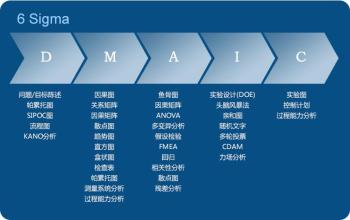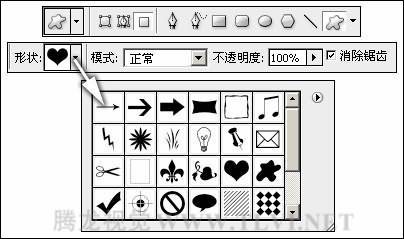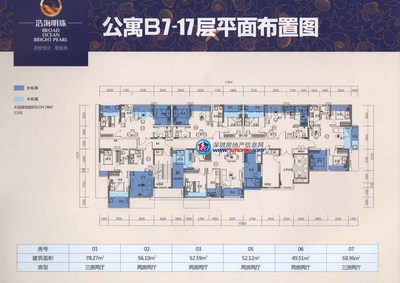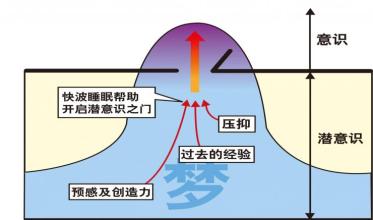Why my company should go for SIX SIGMA ?为什么公司追求6σ?PART1第一节A Beginning Definition of Six Sigma6σ最初的定义Companies exist to be profitable. Profitable companies provide jobs and pay taxes that benefit the community, state, and country where they make their products or provide their services. Making a profit is based on having customers who want your product or service. Wanting your product or service is just the beginning. Every customer has requirements regarding the product or service.公司以营利为目的,盈利公司通过生产产品或提供服务提供就业机会,上缴税款,并使所在社区,国民,政府受益。营利的基础是拥有需求产品和服务的顾客。对产品和服务的需求是第一位的。顾客对产品和服务的需求不同。meeting their requirements, you are being effective. If their requirements are not being met you are being ineffective. If you are ineffective and do nothing about it, soon you will be out of business.满足他们的需求,你的工作就有成效;如果不能满足他们的需求,你就等于在做无用功。如果你做无用功或什么都没有做,你将被市场淘汰。Effectiveness through meeting (and preferably exceeding) requirements is only half the battle. However, focusing merely on customer effectiveness would eventually mean they could go out of business. Why? Because to be a profitable business, an organization must also be efficient. Efficiency relates to the amount of resources consumed in being effective. Efficiency can be measured in time,cost, labor, or value. Since businesses exist to make a profit, being focused on the customer without also being focused on efficiency will not be a good business decision.通过满足顾客的要求获取成效,仅是万里长城的第一步。但是仅关注顾客的要求,最终还会被市场淘汰。为什么?因为要成为盈利公司,公司组织应追求效率。效率跟所消耗的资源数量有关。效率通过时间,成本,劳动或价值来测定。由于公司靠盈利生存,不注重效率,仅关注顾客就不是一个好公司的决策。Six Sigma, at its basic level, is attempting to improve both effectiveness and efficiency at the same time.

6σ最初的目的是企图同时改善效果和效率A technical measure of how many unhappy customer experiences per million opportunities is the concept behind Six Sigma. For example, if on any day McDonald’s served one million customers,how many of them had a bad or unsatisfying experience like poor food quality, wrong food order etc. If only three (yes, three) customers were unhappy with their experience, then McDonald’s achieved Six Sigma on that day. This is because Six Sigma is equivalent to only 3.4 bad customer experiences for every million opportunities.统计每一百万个顾客中有多少个顾客不满意的科学方法就是6σ。例如,麦当劳一天招待1,000,000个顾客,有多少个顾客因饭菜质量不佳和传菜出错等感到不满意。如果只有3个顾客对他们的服务不满意,麦当劳当日达到了6σ。这是因为6σ等于3.4ppm,即几率为百万分之三点四。If 233 bad customer experiences occurred per million McDonald’s customers then McDonald’s would be a Five Sigma company. If 6,210 customers had experienced soggy french fries or an inaccurate order then McDonald’s would be a Four Sigma company. If 66,807 McDonald’s customers opened their lunch bag and found a Big Mac when they had ordered a Quarter Pounder, McDonald’s would be a Three Sigma company.如果每一百万顾客中有233个对服务不满意,麦当劳就是5σ公司。如果有6,210个顾客吃了浸了水的干炸薯条或吃到上错得饭菜,麦当劳就是4σ公司。如果有66,807个顾客要了Quarter Pounder,但是打开他们的午餐袋却发现Big Mac,麦当劳就是3σ公司。Six Sigma is a measure of customer satisfaction that is near perfection. Most companies are at the two to three sigma level of performance–that means between 308,538 and 66,807 customer dissatisfaction occurrences per million customer contacts.6σ是测定顾客满意度(接近完美)的方法。大多数公司处于2σ-3σ水平。也就是一百万顾客当中有308,538-66,807个顾客不满意。Six Sigma was started in the mid-1980s. Here was a quality initiative that had a significant role for management in its implementation. Started at Motorola but popularized in the 1990s by AlliedSignal and General Electric, Six Sigma was different than previous approaches to quality improvement.6σ始于1980年中期,其动机是提高质量,在实施过程中,充当十分重要的管理角色。它最初见于Motorola公司,但在1990年后由AlliedSignal 和 General Electric公司推广。6σ不同于先前的质量改善方法。
PART2
第二部分COMPONENTS OF SIX SIGMA AND DIFFERENCES FROM PREVIOUS APPROACHES TO QUALITY MANAGEMENT6σ的要素及与以前的品质管理的差异Companies that have a two to three sigma level of performance experience business problems. They don’t make as much money as they should for their shareholders. Shareholders get mad and begin to take their money elsewhere. Management wants to increase profitability. They fear for their jobs and want to improve the "bottom line." Often, they think too much in the short term and begin to lay off employees. In the short term, the bottom line looks improved. Of course, the emphasis here is on the short term. With less people in the organization, there is more work for those who remain.
2σ-3σ水平的企业存在业务问题。这样的企业没有挣到足够的钱让股东们分享。股东们发疯了,将他们的投资转向别处。管理人士想增加盈利,他们害怕失去工作,想改善“底线”。通常,他们看中短期效益,他们解雇员工。从短期看,底线得到改善。当然,这里强调的是短期效益。公司职员减少了,留下来的人将有更多的工作。What management forgets by "downsizing" is that if they run a business that is neither effective nor efficient, things will only get worse with less people expected to work harder. Ultimately, businesses that operate by focusing on short-term profitability will result in long-term unprofitability.通过“裁员”进行管理的管理人士忽略了这一点:如果他们经营一个没有活力和没有效率的公司,公司里很少有人希望努力工作,情况会变得更糟。最终,着眼于短期利益的公司,从长期利益来看,是不盈利的。In many companies, management believes that downsizing is a way to improve profitability. Since the 1980s, there have been attempts to change that approach. During the 1980s, some management improved profitability through downsizing. For example, the early 1980s showed an interest in Japanese manufacturing techniques. Some U.S. manufacturers mimicked these techniques. The early 1980s were marked by efforts like Statistical Process Control or Just in Time Manufacturing. While well intentioned, many of these efforts were ill fated from the beginning.许多公司,管理人士认为裁员是提高利益的一种方法。自20世纪八十年代以来,人们做了很多尝试来改变这种做法。20世纪八十年代,部分公司通过裁员盈利。例如,20世纪八十年代初期,日本制造业盈利。一些美国制造业仿效日本制造业。20世纪八十年代初期,统计技术和准时制生产取得成效。尽管许多出发点是好的,但从一开始就注定要失败。Management attempted to use these efforts in the same way they used downsizing. That is, they attempted to use them as cost savings measures. The workforce saw these efforts for what they were, attempts to get more work out of less workers. This was particularly the case when these quality efforts were combined with downsizing. In addition, management only attempted to implement these initiatives as programs.What this meant was that the focus was almost exclusively on the tactics of improvement at the worker level with virtually no work done by management itself. For a company to truly become effective and efficient, it was necessary for a quality initiative to have a focus on changing how executives managed their business.管理人士企图用跟缩少规模相同的方法来节约成本。作业人员从他们的过去看到了他们的努力,企图从裁员中找到更多的工作。这是品质管理方法同缩少规模相结合的特例。另外,管理人士,企图程序般地实施目标。这意味着:着重点几乎在改善员工作业效果的方法上,表面看似管理本身什么也没有做。一个公司要真正变成有成效和有效率,从品质出发,强调改变管理层人士如何经营他们的企业的方法,是必要的。Six Sigma was started in the mid-1980s. Here was a quality initiative that had a significant role for management in its implementation. Started at Motorola but popularized in the 1990s by AlliedSignal and General Electric, Six Sigma was different than previous approaches to quality improvement.6σ始于20世纪八十年代中期,其动机是提高质量,在实施过程中,充当十分重要的管理角色。它最初见于Motorola公司,但在1990年后由AlliedSignal 和 General Electric公司推广。6σ不同于先前的质量改善方法。With other quality approaches, management played little if any role other than approval of bringing in external consultants to train the workforce. With Six Sigma, the work begins with management. First, executives create the Process Management system. Before work is done that affects the average worker, management has already spent several months working on identifying and measuring the processes of their organization.用其他品质管理方法,管理人士除了邀请外面的顾问来培训员工,收效甚微。用6σ,开始就对工作进行管理。首先,执行人员创建过程管理系统。在影响一般员工之前,管理人士已经花了好几个月识别和测定各个管理过程。A process is defined as the series of steps and activities that take inputs provided by suppliers, add value and provide outputs for their customers. Six Sigma as a management philosophy instructs management to begin identifying the 20 or 30 most important processes in their business. Next management measures the current sigma performance of each of these processes.Many, if not all, of the processes will be operating at two to three sigma performance. Some processes may even be lower than two sigma. Once management has identified their processes and personally been involved in measurement of their current performance, they then identify the lowest performing processes that have the most direct impact on the company’s business objectives.过程被定义为一系列的步骤和行为:供应商提供输入,附加价值,向顾客提供输出。6σ,作为一个管理理论,指导管理人士开始确认企业内部20或30个重要的过程。接着,管理人士测量每个过程当前σ功效。大多数过程(如果不是所有的),将在2-3σ运作。有些过程甚至比2σ低。管理人士确认各个过程,亲自参与测量当前功效,他们就可以识别直接影响企业目标的功效最差的过程。Business objectives are the five to seven most important goals a company establishes each year. Sometimes they are financially stated (like profits) but there are others like customer satisfaction or employee satisfaction. 一个公司每年建立5-7个企业目标。有时,企业目标是盈利为目标,但也有其他的企业目标如顾客满意度或职工满意度。Once the processes having the worst performance with the greatest impact to the business objectives are identified, project teams are formed. That’s where the inpidual worker comes in. They will become part of a five to seven person team that will have the responsibility of improving the performance of the worst performing processes. These teams usually exist for four to six months. They are taught a series of tools and concepts (that we will cover in later emails) to help them use their skills to improve sigma performance to achieve greater effectiveness and efficiency.确认对企业目标影响最大的,功效最差的过程,组建“工程队”。那是工人们加入的地方。他们组建5-7人的小组,负责对功效最差的过程进行改善。这些小组存在时间为4-6月。有人教他们改善工具和术语,帮助他们应用技巧改善σ性能,达到更好得效果和效率。PART3第三部分The History of Six Sigma6σ的历史Motorola is where Six Sigma began. A highly skilled, confident,and trained engineer who knew statistics, Mikel Harry began to study the variations in the various processes within Motorola. He soon began to see that too much variation in any process resulted in poor customer satisfaction and ineffectiveness in meeting the customer requirements. While the concept of variation can be expressed statistically, it doesn’t have to be complicated.摩托罗拉是6σ诞生地。Mikel Harry,一个技术熟练的,充满自信的,受过良好教育的,知道统计技术的工程师,开始研究摩托罗拉各个工艺过程中的变化。很快,他发现生产过程中太多变化导致顾客满意度低,工作效率低难以满足顾客的要求。若这些变化用统计技术表示,就不难理解。"Customers feel variation, not averages." Mikel Harry recognized the importance of measuring variations in the various processes of Motorola. However, unlike other quality efforts that spent most time on measurement, Harry and others at Motorola acted on what processes produced the most variation. They applied a complete set of tools to reduce and control the variation in the poorly performing processes and greatly improved the effectiveness and efficiency of those processes.“顾客看到变化,看不到一般”。Mikel Harry认识到测定摩托罗拉工艺过程变化的重要性。但是,不像其他得质量方法,大部分时间花在测量上,Harry和同时测定什么过程产生变化。他们应用一整套工具减少和控制效果差的过程,大大改善了这些过程的效果和效率。Less than two years after the initial application of Six Sigma,General Electric had generated over $320 million in cost savings. By 1998, it had generated three quarters of a billion dollars in cost savings and anticipated over a billion dollars of cost savings by 1999.6σ启用1年多后,通用电气公司节约成本超过320美元。到1998年,通用电气公司节约成本超过750,000,000美元; 到1999年,通用电气公司节约成本有望超过1,000,000,000美元。What Can Six Sigma Do for Your Company and You?6σ对你的公司,对你有什么好处?First, successful implementation of Six Sigma will result in improved effectiveness and efficiency in the first "wave" of projects in the first six to nine months of implementation. Of the 20 to 30 processes in an organization, usually 7 to 10 will be part of the first implementation efforts. Of those 7 to 10 projects, 4 to 7 will probably be successful. These first projects will help generate increased enthusiasm and momentum for future Six Sigma activity within your company.首先,成功推行6σ管理,6-9月将改善首批项目的效果和效率。一个公司20-30个过程,通常,首次推行6σ管理的有7-10个过程。在这7-10个过程中,可能取得成功的有4-7个项目。首次推行的项目,将有助于增加你们公司未来6σ活动的干劲和热情。In later months and years of Six Sigma implementation, you will notice other changes as well. First, while your reporting relationship within the organization may not change, you will be introduced to a group known as process owners. Process Owners are responsible for the management of processes within the organization. While the organization chart doesn’t change, process owners take on informal responsibilities for the management of crossfunctional, inter-departmental processes. These process owners may sponsor a team that is responsible for improving effectiveness and efficiency. These team sponsors are called project champions.6σ实施的最近期间,你会发现许多其它变化。首先,组织内部可能没有变化,但你被介绍给过程业主。过程业主负责组织内部过程的管理。组织结构图没有变化,过程业主负责交叉功能的管理,部门内部的过程管理(非正式)。这些过程业主领导一对人马,负责改善效果和效率。这些分队的领导叫做项目盟主。Your company is pursuing Six Sigma to change the way it does business. To their credit, your management team is trying to change the way it manages. They probably recognize the folly of previous attempts to increase profitability through downsizing. They believe that greater effectiveness and efficiency will bring improved profitability. Improved profitability means business growth. Growth means more jobs, not less. Increased growth can mean increased stock price that will benefit the executives and those who report to them as well as all other stakeholders.你们公司正在实施6σ来改变经营方式。让他们信任的是,你的管理小组设法改变管理模式。他们可能认识到以前通过裁员缩小规模来提高收益时愚昧的措施。他们相信高效率将带来更大的利益。利益率改善意味着营业额增长。营业额增长意味就业率增加,而不是减少。快速增长意味着商品价格增加,这将使管理人士和箱管理人员汇报的职员获益,当然其他员工也不例外。Greater effectiveness and efficiency will mean a lot to you.First, it will mean greater job security. Second, it will mean learning new skills. These new skills will mean greater opportunities such as promotions in your current company. You may decide to take your new skills and market them to other companies. Even if you stay in your current job, you will find these new skills helpful. You will find using the tools of Six Sigma makes your job easier to do. Plus, working in processes that are effective and efficient means less stress and greater job enjoyment.高效率对你而言,非同小可。首先,更加安全,其次,学到了新的技术。这些技术意味着更多的机会,比如公司内部的晋升。你可以带走你的技术增加了到其他公司应聘的筹码。即使你还滞留在原工作岗位,你会发现这些技巧对你的工作很有帮助。你挥发现6σ是一个很好的工具,使你的工作变得更加容易。Summary of Part 1,2 and 31-3部分的概要Six Sigma is a popular management philosophy that is sweeping the globe. Its goal is to make an organization more effective and efficient. Effectiveness is the degree to which an organization meets and exceeds the needs and requirements of its customers. Efficiency is the resources consumed in achieving effectiveness. 6σ是一个受欢迎的管理理论,它波及全球。6σ的目标是使组织更有成效,更有效率。成效是组织满足和超过顾客的要求/需求的程度。效率是获得成效缩小好的资源。Six Sigma is equivalent to no more than 3.4 bad customer experiences for every million customer opportunities. Most organizations operate at between Two to Three Sigma performance, which at best is nearly 70,000 bad customer experiences per million customer opportunities. Six Sigma originated in the 1980s at Motorola. In the early 1990s, it migrated to AlliedSignal and in the mid-1990s, General Electric adopted it as their premier management philosophy.Unlike other quality initiatives that focused just on tools, Six Sigma is based on the active involvement it generates from management. Results from Six Sigma have not been paralleled by any other quality initiative.6σ等于每1.000,000顾客由3.4个不满意。大多数公司在2-3σ运作,也就是每1.000,000顾客约有7000个不满意。6σ由摩托罗拉在19世纪80年代初创,在19世纪90年代早期,迁移到AlliedSignal,在19世纪90年代中期,General Electric 将它作为基本的管理论。The Tactics of SIX SIGMA6σ策略The tactics of Six Sigma are very much like the scientific method learned in elementary school. The scientific method is based on defining a problem, measuring the impact of the problem, determining root causes, and forming and testing hypotheses. 6σ策略酷似小学学到的科学方法。该科学方法根本点在于确定问题,衡量问题的影响,探寻问题的根源,构造假说和验证假说。The tactics of Six Sigma are made up of five steps: Define,Measure, Analyze, Improve, and Control. The five steps of tactical Six Sigma are sometimes known by their initials DMAIC.6σ策略由5步组成:定义,测定,分析,改善和控制。6σ策略的5步有时称作DMAIC。Each step in DMAIC has a series of substeps known as tollgates.DMAIC的每步由一系列关组成。A. The tollgates of Define include creating the team’s charter,identifying the customers of the process, their needs and requirements, and creating a high-level map of the process.定义由下列关组成:创建队章,识别过程顾客,确定顾客需求和创建过程高位图B. The tollgates of Measure include creation of the data collection plan and implementing that plan.测量由下列关组成:制订数据收集计划和按照计划实施C. The tollgates of Analysis include analyzing the data, analyzing the process, and analyzing the root causes for current sigma performance.分析由下列关组成:分析数据,分析过程,分析当前σ功效的根源。D. The tollgates of Improve include generating and selecting solutions.改善由下列关组成:探寻解决问题的方案和选择最佳解决方案。E. The Control tollgates include choosing and implementing a form of technical control over the new processand creating a Response Plan.控制由下列关组成:选择新过程的控制方法,实施控制和创建响应计划。
The Define Tollgates定义The Charter is the collection of documents that provide purpose and motivation for a Six Sigma team to do its work. It includes: The business case, The problem statement, Project scope, Goals and objectives, Milestones, Roles and responsibilities of the project team (Champion,Black Belt, Green Belt).章程是收集能提供6σ组开展工作的目的和动机的文档。它包括业务,问题描述,工程范围,目标,里程碑,工程组的职责(盟主,黑带,绿带)。The Measure Tollgates测量Creation of the Data Collection Plan :-数据收集计划的创建The data collection plan has following columns. Each column has an important role in helping the team calculate the last column, baseline sigma.数据收集计划包括下列栏目。每一栏有一个重要的角色,帮助各小组计算最后一栏的基础σ。1. What to measure:测量对象2. The type of measure:测量类型3. The type of data:数据类型4. Operational definitions:运作的定义5. Targets/specifications:目标/要求6. Data collection forms:数据收集形式7. Sampling:取样 爱华网
爱华网



